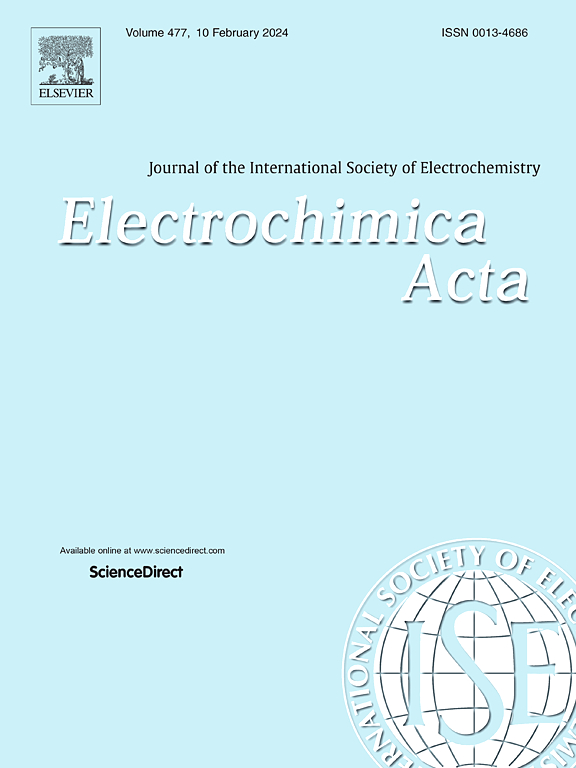Mo-Doped MnO2 for Enhanced H+/NH4+ Co-Intercalation in Aqueous Ammonium-Ion Hybrid Supercapacitors
IF 5.5
3区 材料科学
Q1 ELECTROCHEMISTRY
引用次数: 0
Abstract
MnO2-based electrode materials have attracted extensive research interest in aqueous ammonium-ion hybrid supercapacitors (A-HSCs) due to their low cost, environmental benignity, and high theoretical capacitance. However, their practical capacitance remains inferior to that of lithium-ion battery electrodes, largely due to the limitations of a pure NH4+ storage mechanism. In this work, Mo6+-doped MnO2 (MMN-2) was synthesized via a facile hydrothermal method. Experimental results demonstrate that Mo6+ doping promotes a H+/NH4+ co-intercalation/deintercalation mechanism, substantially boosting the specific capacitance of MnO2. Moreover, Mo6+ doping optimizes the microstructure and pore size distribution of MnO2, improving electrolyte ion transport and structural stability during cycling. The MMN-2 electrode delivers a high specific capacitance of 586.2 F g-1 at 2 mA cm-2 and exhibits remarkable cycling stability, retaining 91.9% of its capacitance after 17,200 cycles. When assembled with activated carbon cloth (ACC) into an MMN-2//ACC A-HSC device, it achieves a maximum energy density of 0.787 mWh cm-2 at a power density of 0.5 mW cm-2. This work highlights Mo doping as an effective strategy to enable H+/NH4+ co-intercalation in MnO2, providing valuable guidance for designing high-performance ammonium-ion storage materials.

mo掺杂MnO2在水铵离子复合超级电容器中增强H+/NH4+共插层
二氧化锰电极材料因其成本低、环境友好、理论电容高等优点,在水铵离子混合超级电容器(a - hsc)中引起了广泛的研究兴趣。然而,它们的实际电容仍然不如锂离子电池电极,这主要是由于纯NH4+存储机制的限制。本文采用水热法合成了Mo6+掺杂MnO2 (MMN-2)。实验结果表明,Mo6+的掺杂促进了H+/NH4+的共插/脱插机制,显著提高了MnO2的比电容。此外,Mo6+的掺杂优化了MnO2的微观结构和孔径分布,改善了循环过程中电解质离子的传输和结构稳定性。MMN-2电极在2 mA cm-2下具有586.2 F -1的高比电容,并表现出显著的循环稳定性,在17,200次循环后保持91.9%的电容。当与活性炭布(ACC)组装成MMN-2//ACC a - hsc装置时,其功率密度为0.5 mW cm-2,最大能量密度为0.787 mWh cm-2。本研究强调Mo掺杂是实现H+/NH4+在MnO2中共插层的有效策略,为设计高性能铵离子存储材料提供了有价值的指导。
本文章由计算机程序翻译,如有差异,请以英文原文为准。
求助全文
约1分钟内获得全文
求助全文
来源期刊

Electrochimica Acta
工程技术-电化学
CiteScore
11.30
自引率
6.10%
发文量
1634
审稿时长
41 days
期刊介绍:
Electrochimica Acta is an international journal. It is intended for the publication of both original work and reviews in the field of electrochemistry. Electrochemistry should be interpreted to mean any of the research fields covered by the Divisions of the International Society of Electrochemistry listed below, as well as emerging scientific domains covered by ISE New Topics Committee.
 求助内容:
求助内容: 应助结果提醒方式:
应助结果提醒方式:


